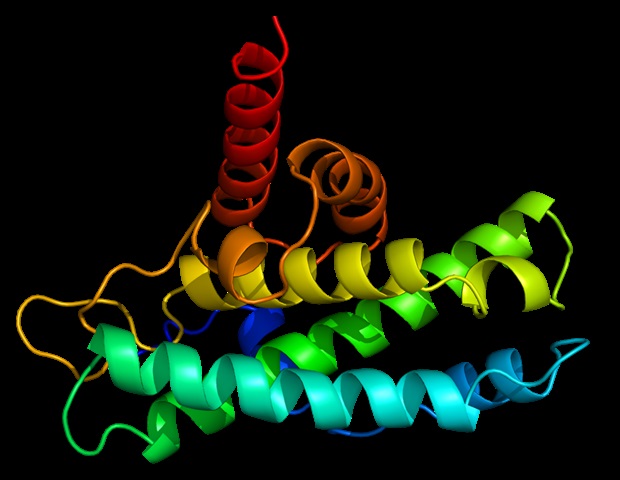
Insights into the workings of an immune cell floor receptor, referred to as PD-1, reveal how remedies that limit its motion can doubtlessly be strengthened to enhance their anticancer impact, a brand new research exhibits. The identical findings additionally help experimental remedy methods for autoimmune ailments, during which the immune system assaults the physique, as a result of stimulating the motion of PD-1, versus limiting it, can doubtlessly block an overactive immune response.
Led by researchers at NYU Langone Well being’s Perlmutter Most cancers Middle and the College of Oxford, the research is publishing within the journal Science Immunology on-line March 8.
The research outcomes revolve across the physique’s immune system, which is primed to assault virally contaminated and cancerous cells whereas leaving regular cells alone. To spare regular cells from immune assault, the system makes use of “checkpoints,” sensors on the floor of immune cells, together with T cells, which flip them off or dampen activation once they obtain the precise sign. The immune system acknowledges tumors as irregular, however most cancers cells can hijack checkpoints to show off immune responses.
Among the many most necessary checkpoints is a protein referred to as programmed cell dying receptor 1 (PD-1), which is shut down by a comparatively new drug class referred to as checkpoint inhibitors to make tumors “seen” once more to immune assault. Such medication are at the very least considerably efficient in a 3rd of sufferers with a wide range of cancers, say the research authors, however the subject is urgently looking for methods to enhance their efficiency and scope.
On the similar time, PD-1 signaling is slowed in autoimmune ailments like rheumatoid arthritis, lupus, and kind 1 diabetes, such that the motion of unchecked immune cells creates irritation that may injury tissues. Agonists, medication that stimulate PD-1, are actually displaying promise in medical trials.
Many immune checkpoints are receptors on the floor of T cells that act to translate docking info from the skin of the cell to the signaling portion of the receptor contained in the cell. Connecting the outside-of-the-cell portion of PD-1 with the within portion is the transmembrane section. Many immune receptors operate in pairs referred to as dimers, however so far, PD-1 has been thought to operate alone, not within the dimer type.
Examine outcomes confirmed that PD-1 varieties a dimer via interactions of its transmembrane section. Researchers say this discovering is in sharp distinction to different immune receptors, which usually type dimers via the section of the receptor that’s exterior the cell.
Additional immune cell testing in mice confirmed that encouraging PD-1 to type dimers, particularly within the transmembrane area however not in its outer or inside areas, elevated its capacity to suppress T cell exercise, whereas reducing transmembrane dimerization lowered PD-1’s capacity to inhibit immune cell exercise.
Our research reveals that the PD-1 receptor capabilities optimally as dimers pushed by interactions throughout the transmembrane area on the floor of T cells, opposite to the dogma that PD-1 is a monomer.”
Elliot Philips, MD, PhD, Examine Lead Investigator and Doctor-Scientist, NYU Grossman Faculty of Medication
Elliot Philips is an inside medication resident at NYU Grossman Faculty of Medication and Perlmutter Most cancers Middle. Philips can be an alumnus of the Vilcek Institute of Biomedical Sciences at NYU.
“Our findings provide new insights into the molecular workings of the PD-1 immune cell protein which have confirmed pivotal to the event of the present era of anticancer immunotherapies, and that are proving important within the design and growing of the following era of immunotherapies for autoimmune ailments,” mentioned research co-senior investigator and most cancers immunologist Jun Wang, PhD. Wang is an assistant professor within the Division of Pathology at NYU Grossman and Perlmutter.
“Our objective is to make use of our new information of the functioning of PD-1 to find out if weakening its dimerization, or pairing, helps make anticancer immunotherapies simpler, and simply as importantly, to see if strengthening its dimerization helps within the design of agonist medication that quiet overactive T cells, tamping down the irritation seen in autoimmune ailments,” mentioned research co-senior investigator and structural biologist Xiang-Peng Kong, PhD. “Presently, analysis efforts have targeted on strengthening PD-1 interactions with its ligands, or signaling molecules, concerned with inhibiting T cell motion.
“Our new research means that efforts to design higher medication ought to concentrate on growing or reducing PD-1’s dimerization to control T cell operate,” mentioned Kong, a professor within the Division of Biochemistry and Molecular Pharmacology at NYU Grossman and Perlmutter.
Among the many research’s different findings was {that a} single change within the amino acid construction of the transmembrane section can act to both improve or diminish the inhibitory operate of PD-1 in immune responses. The staff plans additional investigations of PD-1 inhibitors and agonists to see if they will tailor what they are saying are simpler, “rationally designed” therapies for each most cancers and autoimmune problems.
Funding help for the brand new research was offered by Nationwide Institutes of Well being grants R01AI125640, R37CA273333 T32AR069515, and T32GM007308. Further funding help was offered by NYU Grossman Faculty of Medication, Kennedy Belief for Rheumatology Analysis grant 100262Z/12/Z; Analysis Council of Norway grant 275466, at the side of Marie Sklodowska-Curie Actions; Wellcome Belief grant 108869/Z/15/Z; the Melanoma Analysis Alliance; and a pilot award from the NYU Colton Middle for autoimmunity. Wang has been a paid marketing consultant to RootPath Genomics, Bristol Myers Squibb, and Hanmi Pharmaceutical and is a founder, fairness holder, and marketing consultant to Remunix. These pursuits and relationships are being managed in accordance with the insurance policies of NYU Langone Well being.
Moreover Philips, Wang, and Kong, different NYU Langone researchers concerned on this research are colead investigator Jia Liu, and coinvestigators Charles Ng, Ian Ahearn, Ruimin Pan, Christina Luo, Alexander Leithner, Zhihua Qin, and Dan Littman, who can be a Howard Hughes Medical Institute investigator. Different research coinvestigators embrace Audun Kvalvaag, at Oslo College, Norway; Alexander Morch and co-senior investigator Michael Dustin, on the College of Oxford, United Kingdom; Anna Tocheva, on the Icahn Faculty of Medication at Mount Sinai in New York; Hong Liang and Yong Zhou, on the College of Texas in Houston; Antonio Garcia-Espana, on the College of Rovira i Virgili in Tarragona, Spain; and Adam Mor, at Columbia College in New York.
Supply:
Journal reference:
Philips, E. A., et al. (2024) Transmembrane area–pushed PD-1 dimers mediate T cell inhibition. Science Immunology. doi.org/10.1126/sciimmunol.ade6256.


